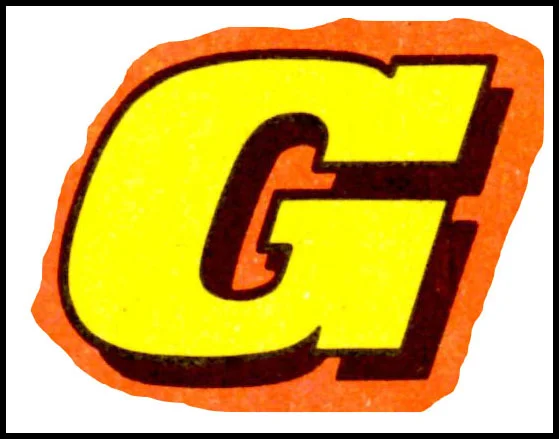On this day, 17 September 1988: Crisis
Cover artwork: Carlos Ezquerra
On this day, 17 September 1988 … Fleetway Publications (the new name of the IPC Youth Group after its acquisition by Robert Maxwell’s BPCC) launched Crisis 28 years ago today, the centrepiece of the publisher’s strategy to claim a slice of the growing adult interest in comics inspired by Alan Moore and Dave Gibbons’ Watchmen. Crisis was the brainchild of Steve MacManus, on special assignment from Fleetway to develop comics for this buoyant new market. Following an extended research trip to the US, entertainingly diarised in his recent memoir The Mighty One, Steve devised a quality comic pitched as a more mature spin-off from 2000AD, printed in full-colour on quality paper, to dimensions that could be simply reduced down to the US marketplace standard for reprint across the waters. Crisis was to be published fortnightly, and comprise two serials each running to fourteen pages per issue – every two issues would be doubled up for monthly US releases of each story as standalone titles. The comic also marked a break away from IPC/Fleetway’s traditional policy of acquiring all rights on their titles for a flat fee as creators on Crisis retained reprint and various subsidiary rights, plus a royalty on all copies sold over a break-even point.
Crisis is fascinating to read. The first and most obvious point to make is that it looks fantastic, even allowing for the late 1980s blocky design, which isn’t normally to my taste. That the comic is in colour throughout – and well-executed colour too, which wasn’t always a given in the move to full-colour publishing at this time and into the 1990s – making it an unusual inclusion for this blog. The strict fourteen-page-per story format is a little restrictive; each strip is granted an additional page as a title page, leaving only the front and back cover for any sort of general editorial content. The back cover includes details of a twelve-city UK launch tour, and a full list of credits. Under Steve MacManus’ name are Igor Goldkind (PR/Editorial Consultant) and Rian Hughes (Design), and Steve is clear in his book that both played invaluable roles in Crisis’ initial success.
Third World War, boasting some of Carlos Ezquerra's finest colour artwork, is set twelve years into Crisis' future – the year 2000AD – a time in which multinational companies sponsor militarised aid agencies to bring 'stability' and commercial compliance to third world nations. The writer, unmistakably, is Pat Mills, creator of Charley's War, the definitive First World War comic, and previously critical of IPC's over-obsession with the Second. Here, he prophesies a depressing yet entirely credible near-future controlled by the corporations. Mills’ polemical writing isn't loved by all – often a sign of a writer touching a nerve – but is always clear and provocative. This opening episode introduces us to the members of a team of young women and men conscripted to 'relocate' the villagers of a Central American village. Each member of the military ‘aid’ unit (called 'Market Force' – curiously, Fleetway Publications’ distribution team at this time was called Marketforce) is introduced with a brief caption describing their defining personal characteristic – a Millsian narrative device that will be familiar to readers of ABC Warriors, Slaine and Savage in recent years.
Crisis' second story is New Statesman, drawn by Jim Baikie (who appeared in a 1978 issue Jinty in yesterday's blog post) and written by John Smith. Like Third World War, New Statesman is a dystopian political tale, this time concerned with a United States in which every state (including England, the 51st state) is represented by its own genetically engineered superhero. Like Watchmen, the story explores the unstable psyches of this elite caste of humanity and the threat posed when their power is misused. While Third World War attacked multinationals, New Statesmen targets the fascistic religious right.
Smith's writing is more opaque than Mills' - both are challenging and rewarding but I suspect appeal to different tastes. Each is radical, however, and they combine to make Crisis a potent read – all the more so in the context of this technically being a Maxwell publication. It almost outlived its owner, folding after 63 issues in October 1991 – just a month before the massive media mogul fell over the side of his boat. It's a shame that Crisis didn't thrive for many more years but perhaps it's fitting and right that this comic with a soul didn't become a commercial success.
Third World War: Pat Mills (writer), Carlos Ezquerra (artist)
Third World War: Pat Mills (writer), Carlos Ezquerra (artist)
Third World War: Pat Mills (writer), Carlos Ezquerra (artist)
Third World War: Pat Mills (writer), Carlos Ezquerra (artist)
Third World War: Pat Mills (writer), Carlos Ezquerra (artist)
New Statesmen: John Smith (writer), Jim Baikie (artist)
New Statesmen: John Smith (writer), Jim Baikie (artist)
New Statesmen: John Smith (writer), Jim Baikie (artist)
New Statesmen: John Smith (writer), Jim Baikie (artist)
New Statesmen: John Smith (writer), Jim Baikie (artist)
New Statesmen: John Smith (writer), Jim Baikie (artist)



